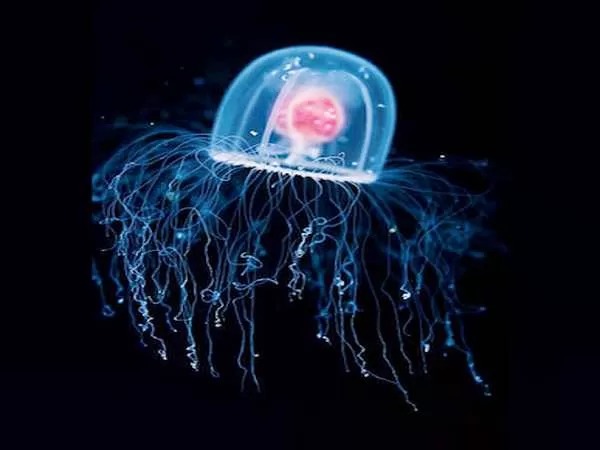Imagine if we could rewind our lives, starting old and becoming younger as time passed. While such a reversal is purely hypothetical for humans, there is a remarkable creature on Earth that comes astonishingly close to this concept of biological immortality. Meet the Turritopsis nutricula, often dubbed the “immortal jellyfish.” This small saltwater animal, related to jellyfish and corals, possesses a unique ability that defies the conventional understanding of life cycles.
The Life Cycle of Turritopsis Nutricula
The Turritopsis nutricula, or T’nut as we’ll call it, is a hydrozoan with a life cycle that closely resembles other jellyfish species. Like its relatives, T’nut undergoes two primary stages in its lifecycle: the polypoid stage and the medusa stage.
- Polypoid Stage: In this initial phase, T’nut resembles a small, sessile stalk with feeding tentacles. This stage is akin to the larval or juvenile phase of many marine organisms.
- Medusa Stage: As T’nut matures, it transforms into the more familiar jellyfish form—a bell-shaped, free-swimming creature. In this medusa stage, the jellyfish reproduces asexually, producing offspring that eventually grow into new polyps.
While most jellyfish species have lifespans ranging from a few hours to several months, T’nut breaks the mold. It measures only 4-5 mm in diameter but has a life-extending trick up its sleeve.
The Secret to Immortality
Turritopsis nutricula’s claim to fame lies in its extraordinary ability to reverse its life cycle. Unlike typical jellyfish that follow a linear progression from polyp to medusa and eventually perish, T’nut can revert from its mature jellyfish form back to the immature polyp stage. This process effectively allows it to escape death and start anew.
This phenomenon is known as transdifferentiation. In simple terms, transdifferentiation is when cells transform from one type to another. Unlike regular regeneration, where cells replace damaged tissue, T’nut’s cells undergo a complete overhaul. Non-stem cells or already specialized cells convert into different types of cells or create cells outside their original specialization.
The transformation requires tissue from both the jellyfish’s bell surface and its circulatory canal system. Essentially, T’nut can deconstruct its mature form and rebuild itself into an earlier, juvenile state. This capability is not unique to T’nut alone; various animals and even humans exhibit similar cellular plasticity during organ regeneration. However, T’nut’s ability to regularly revert to an immature state as part of its life cycle is unparalleled.
Global Spread and Silent Invasion
Turritopsis nutricula is believed to have originated in the Caribbean but has since spread to temperate and tropical regions across the globe. This dispersion is largely due to the movement of ballast water from ships, which carries the jellyfish to new environments. According to Dr. Maria Pia Miglietta from the Smithsonian Tropical Marine Institute, this spread can be described as a “worldwide silent invasion.”
While this species’ biological immortality is intriguing, it does not render T’nut invincible. In its immature polyp form, the jellyfish is vulnerable to predators and diseases. Many T’nuts do not survive long enough to reach the medusa stage. Despite its remarkable regenerative abilities, the immortal jellyfish faces many of the same dangers as other marine organisms.
The Fascination with Biological Immortality
Turritopsis nutricula’s unique life cycle has captured the imagination of scientists and the public alike. The concept of biological immortality raises fascinating questions about aging and cellular regeneration. The ability of T’nut to revert to an earlier life stage challenges our understanding of life cycles and biological limitations.
In practical terms, while T’nut does not offer a direct path to human immortality, studying its mechanisms can provide valuable insights into cell biology and aging. Understanding how this jellyfish manages its lifecycle could have implications for regenerative medicine and longevity research.
The Broader Impact
The Turritopsis nutricula not only exemplifies nature’s ingenuity but also highlights the interconnectedness of global ecosystems. Its spread across oceans due to human activities underscores the need for better environmental management and awareness of how species can inadvertently travel between ecosystems.
In conclusion, the immortal jellyfish, Turritopsis nutricula, presents a captivating case of biological immortality. Its ability to revert to an earlier life stage and start anew challenges conventional views on aging and life cycles. While T’nut’s immortality is not without its limits, it serves as a fascinating subject for scientific exploration and a reminder of the wonders of the natural world.

